Cities & Culture
Capital of Culture Berlin: From Museums to Street Art
Berlin's cultural scene is constantly introducing fresh new trends. Whether theatre fan or museum visitor, clubber or cabaret lover: everyone will find the right event here - and something new every day!
The Cultural Heart
Humboldt Forum
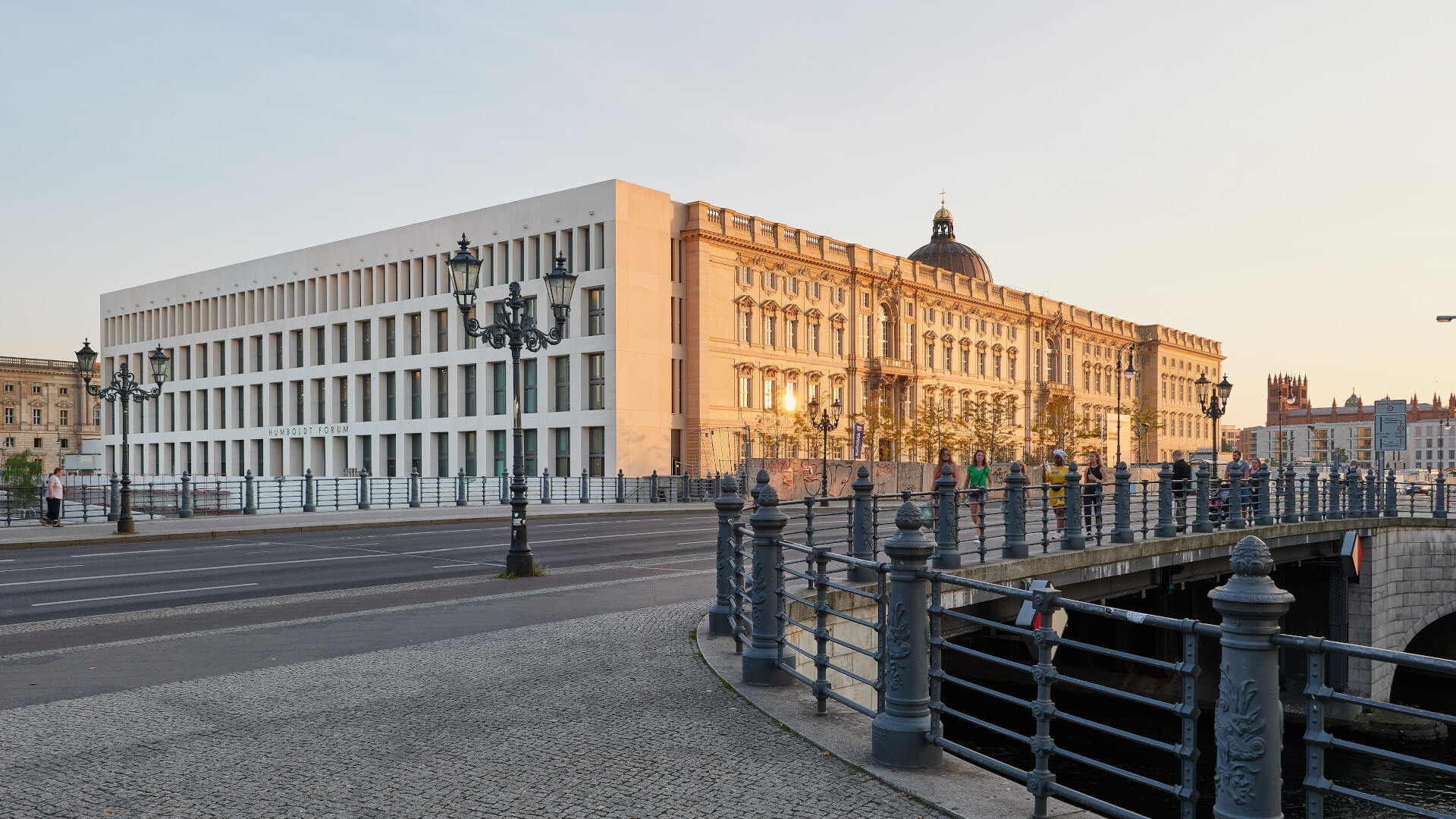 Berlin: Humbold-Forum
©Stiftung Humboldt Forum im Berliner Schloss (Andreas König)
Berlin: Humbold-Forum
©Stiftung Humboldt Forum im Berliner Schloss (Andreas König)
The end of 2020 saw the (digital) opening of the Humboldt Forum on the Spree Island in the historic centre of Berlin, and with it the newly rebuilt Berlin Palace in its modern form. Three sides of the impressive building show the baroque facades of the Berlin Palace, which was damaged in the Second World War and then blown up in 1950. The façade facing the Spree has been given a modern design by architect Franco Stella. This contrast of baroque and contemporary architecture is also what makes the Humboldt Forum so fascinating. In this building, Berlin has developed a modern Old Centre of great representative power. The Forum sees itself as a modern cultural centre where science and art can engage in dialogue. The centrepieces are the collections of the Ethnological Museum and the Museum of Asian Art of the National Museums in Berlin. Additionally, there is the exhibition of the Federal State of Berlin, which documents the city's interaction with the world. Also, the Humboldt University provides a stage for science and thus makes it an integral part of the culture.
A Salon for Art
James Simon Gallery
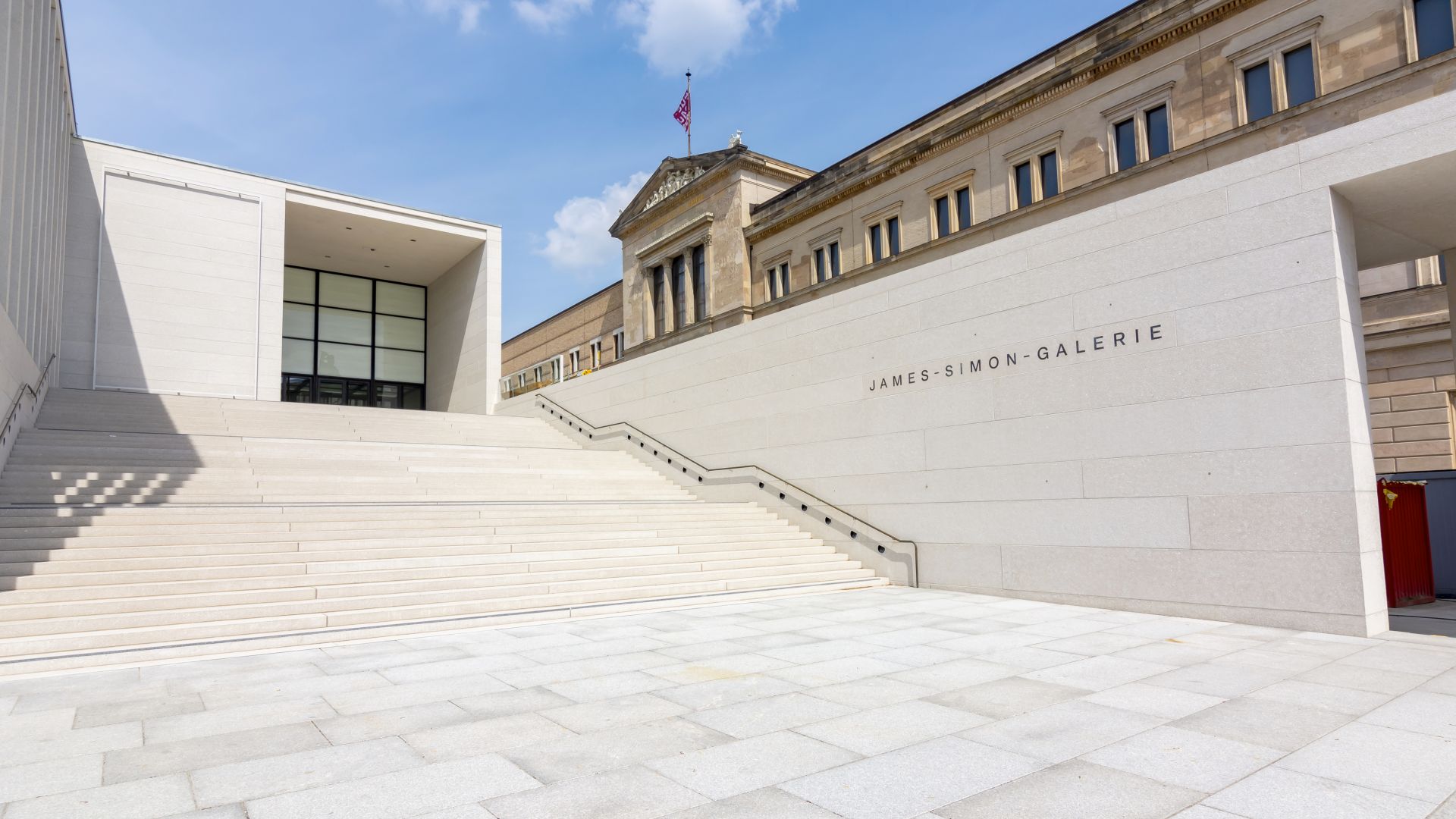 Berlin: James Simon Gallery on Museum Island
©Adobe Stock (Mistervlad)
Berlin: James Simon Gallery on Museum Island
©Adobe Stock (Mistervlad)
Five world-famous museum buildings from the time of the Prussian rulers - assembled on the Museum Island in the centre of Berlin as a magnificent synthesis of the arts - were in need of a reception area. So the Prussian Cultural Heritage Foundation decided to create a spectacular reception centre on the Museum Island for its approximately three million international visitors arriving annually from all over the world. The commission was awarded to David Chipperfield, one of the most important architects of our time. He created the James Simon Gallery, which with its inviting open staircase and colonnades has already won three architectural awards since its completion in 2019. The gallery houses an exhibition area and an auditorium, but primarily serves as the central visitor centre for the five museums on the Spree Island, with a ticket office, information and cloakroom area as well as a café, restaurant and shop.
Train of Creativity
The Museum Line
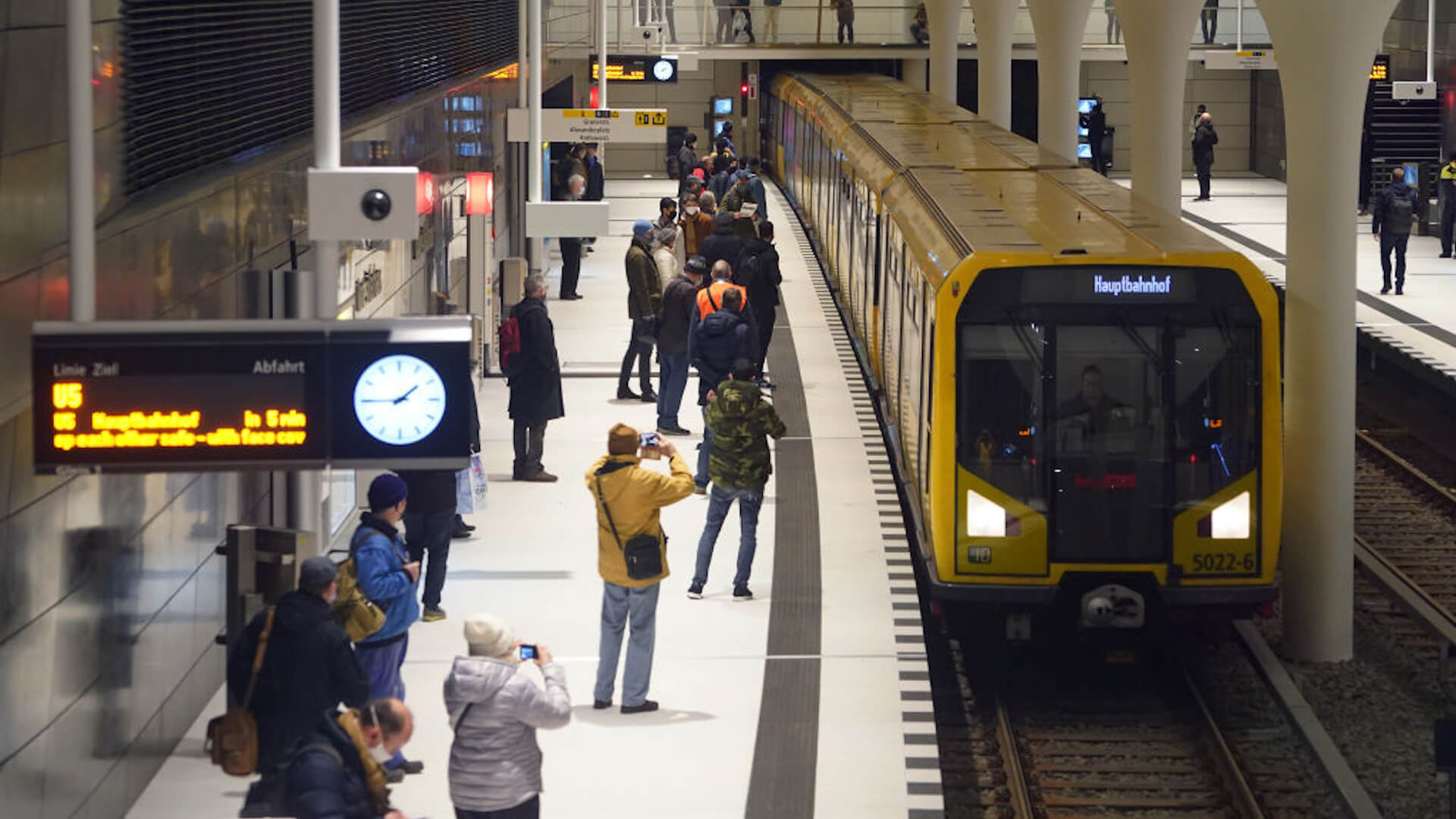 Berlin: Museum line U5, Rotes Rathaus stop
©Getty images (Sean Gallup / Staff)
Berlin: Museum line U5, Rotes Rathaus stop
©Getty images (Sean Gallup / Staff)
What is a convenient and sustainable way to experience Berlin's culture? Lately, the answer has been: with the U5 underground line, also called the "Museum Line". This sightseeing tour by rail starts at the Berlin Central Station and then takes you right through the Berlin-Mitte district to Berlin Hönow. There are 26 stations where passengers can hop off. Along the way are landmarks such as the Reichstag, the Brandenburg Gate, the Humboldt Forum, Museum Island, the Alexanderplatz and the Tierpark Zoo. There are three underground stations that have been creatively redesigned and are now part of the Berlin art scene themselves. Tip: With the Berlin WelcomeCard, the official tourist ticket for Berlin, you can use the underground for free and also enjoy up to 50 per cent discount for numerous attractions along the way.
The "Kiez" District
Friedrichshain-Kreuzberg
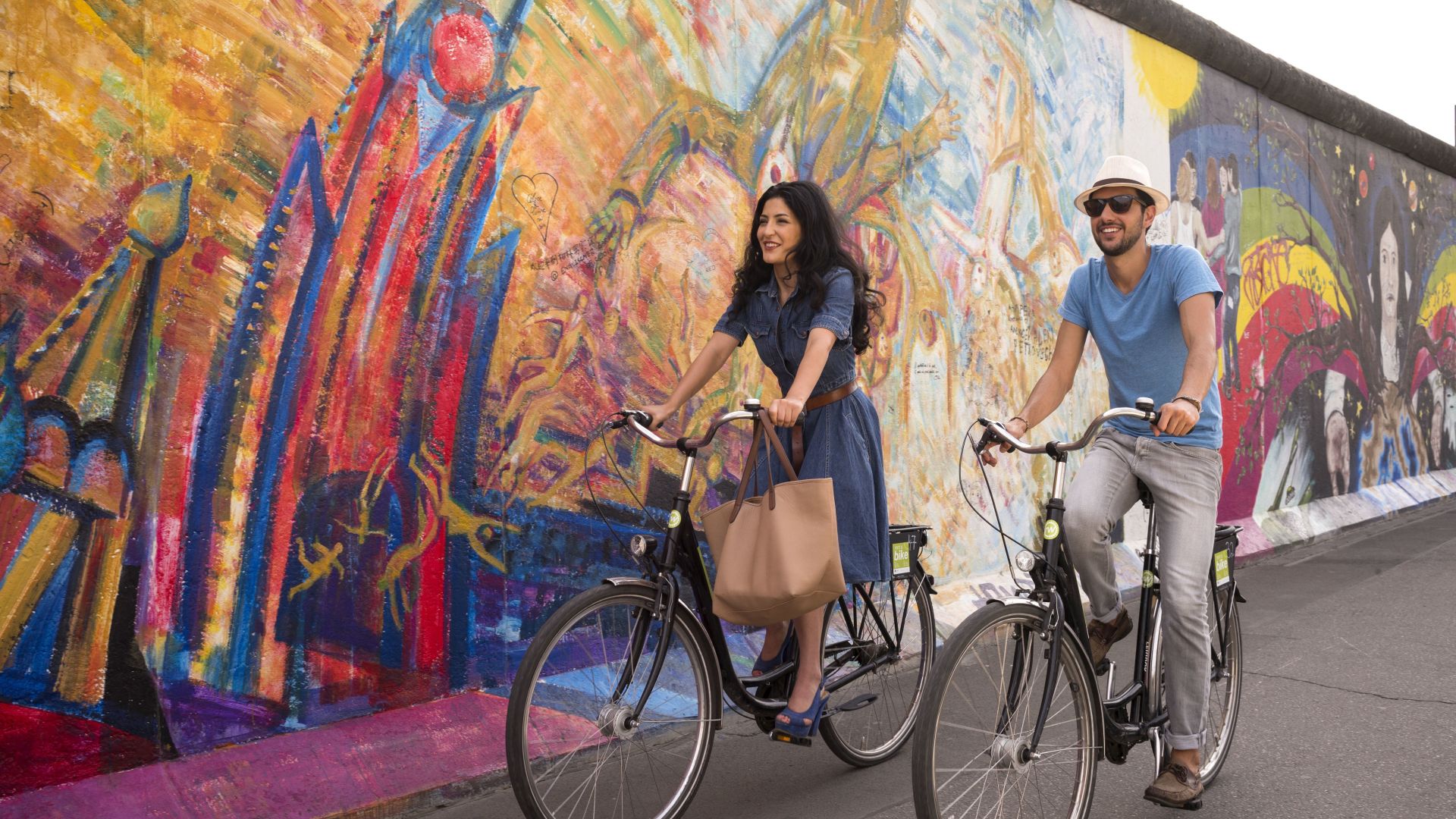 Berlin: East Side Gallery am Berliner Mauerweg
©visitBerlin (Philip Koschel)
Berlin: East Side Gallery am Berliner Mauerweg
©visitBerlin (Philip Koschel)
Had enough of museums and theatres, of high culture and mainstream art? Then it's time for a change: head to Friedrichshain-Kreuzberg. Here, the creative scene cultivates an alternative lifestyle. In this district, the heart of Berlin beats with particular speed and intensity. Besides bars and clubs, street food and street music, flea markets and urban gardening, visitors strolling around will come across outdoor art everywhere. Along the Spree you can discover fascinating examples of Berlin's historical industrial heritage , for example in the Glühlampenviertel (Lightbulb District) or at the Osthafen (East Harbour). Today, this is the go-to place for the music and media industry. Not forgetting another highlight in what is perhaps the coolest neighbourhood in the city: the famous East Side Gallery along the former Berlin Wall that is also the longest open-air gallery in the world.
Chasing the Spies
Unusual Museums
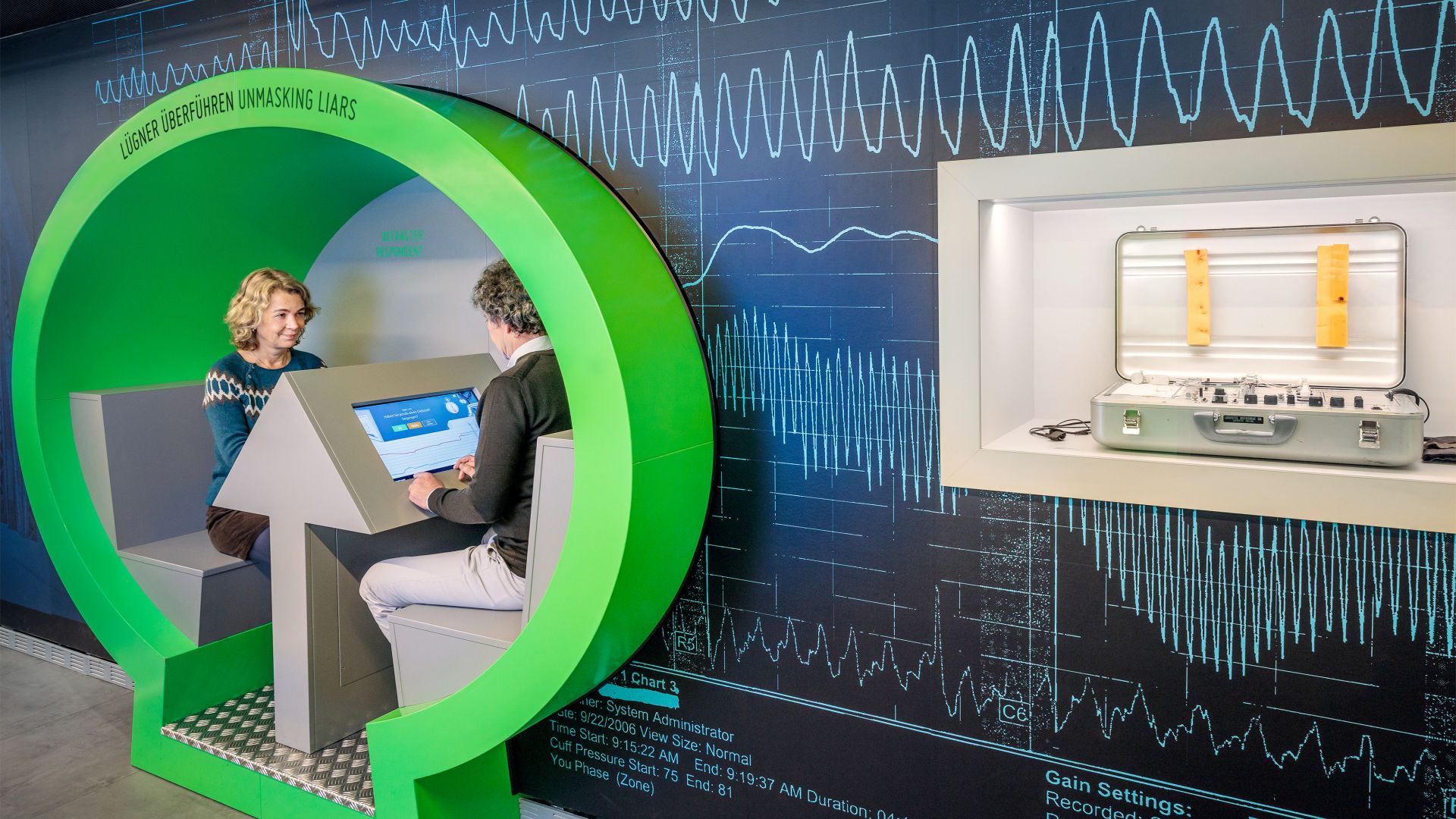 Berlin: two people at the lie detector in the German Spy Museum
©Deutsches Spionagemuseum (Deutsches Spionagemuseum)
Berlin: two people at the lie detector in the German Spy Museum
©Deutsches Spionagemuseum (Deutsches Spionagemuseum)
The works of Albrecht Dürer, Claude Monet, Vincent van Gogh and countless other world-famous artists can be admired in Berlin's exhibition spaces. Museums, however, can also be arranged in a completely different - and very original - way, as you can discover wonderfully in Berlin. For example, there is the German Museum of Espionage at Potsdamer Platz underground station, which offers a glimpse into the shadowy realm of spies, informers and agents. One of the most visited museums in Berlin is the DDR Museum, which shows in a lively, interactive and research-based way what everyday life was like in the former GDR, some thirty years back before reunification. There is a long list of unusual museums in Berlin. These include the DesignPanoptikum for whimsical objects, a Lipstick Museum, a Hemp Museum, a Gas Lantern Open Air Museum, and many more exciting places.
Celebrations for Everyone
Festivals
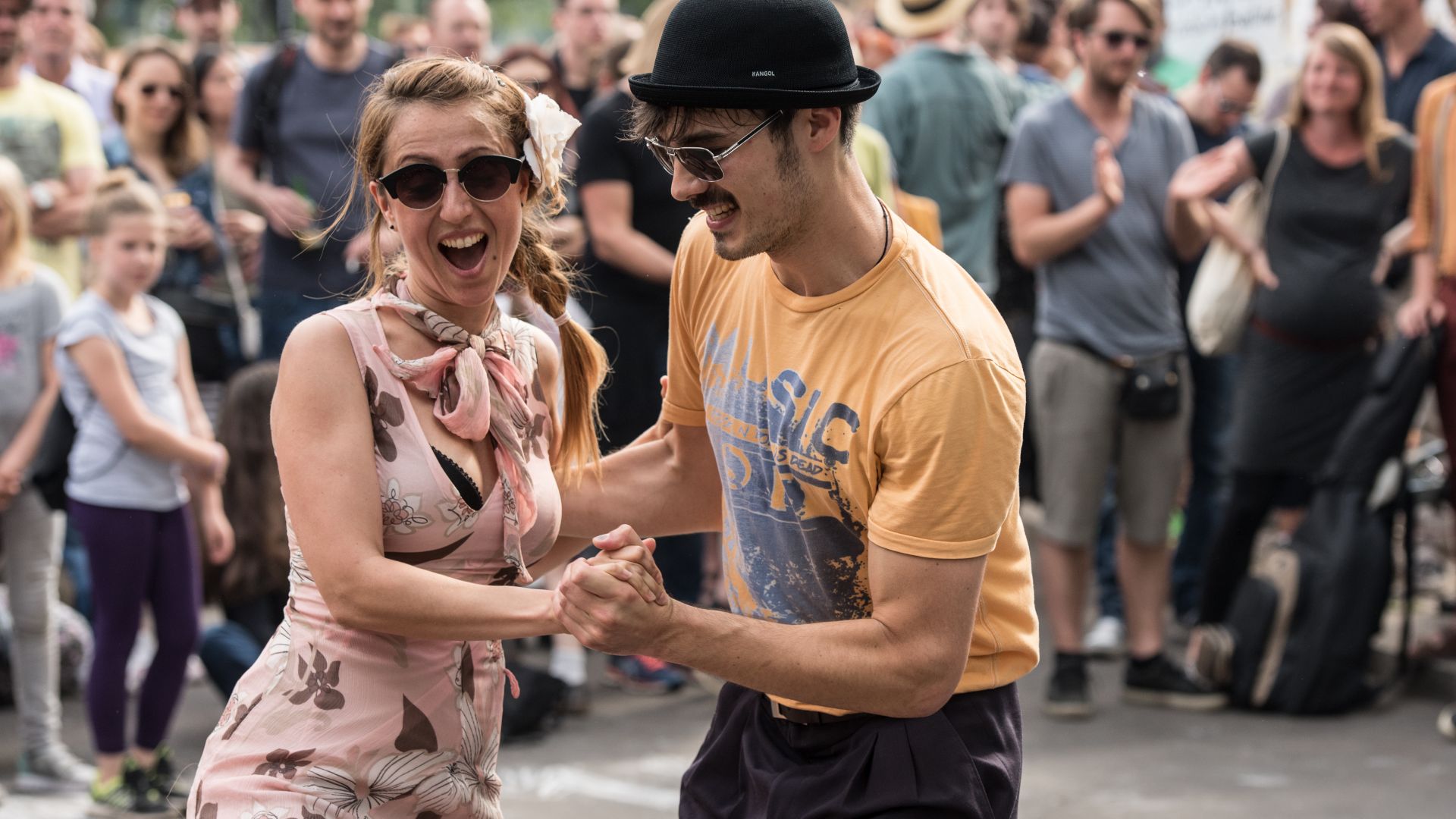 Berlin: Carnival of cultures
©Karneval der Kulturen (Frank Löhmer)
Berlin: Carnival of cultures
©Karneval der Kulturen (Frank Löhmer)
Say goodbye to the daily grind and hello to festivals: Berlin is home to events, festivals and open-air events all year round. Whether techno, relaxed indie sound, or a raucous New Year's Eve party - everyone gets their money's worth on the Spree. The Carnival of Cultures is a multicultural event in true Berlin style. This four-day street festival over Pentecost, which first put the Kreuzberg district in a celebratory mood back in 1996, invites people regardless of their age and cultural roots to enjoy street parades, culinary excursions and creative hands-on activities. With Anatolian jazz, Afrobeat, Japanese fusion rock or Balkan beats, it also takes you on a musical journey around the world. A contrasting programme is offered by the Classic Open Air concert series on the Gendarmenmarkt, one of Berlin's most beautiful squares featuring the Konzerthaus, the German Cathedral and the French Cathedral. Musical delights have been offered there since 1992. The programme ranges from classical master compositions to Mediterranean opera hits and the evergreens of the pop world. This high-carat open-air event is crowned by a brilliant fireworks display.